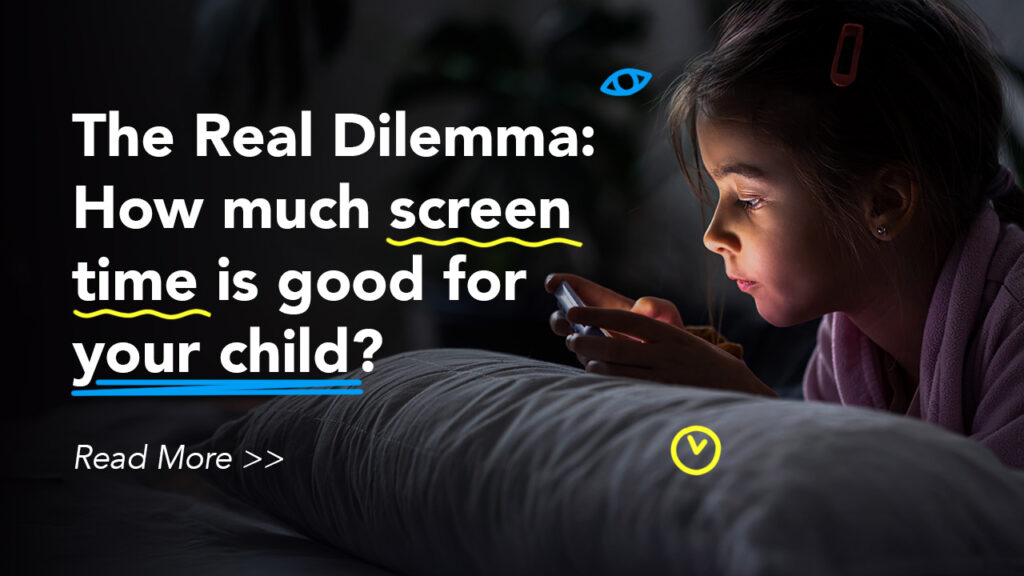We’ve all been there—your child is glued to a screen, giggling at cartoons, conquering video games, or endlessly scrolling. As much as we want to cheer for their digital victories, we can’t help but wonder: Is this too much screen time? or how to monitor screen time for children?
For students in Class 10 preparing for the 2024–2025 pre-boards, this concern grows even more pressing. With exams around the corner, finding a balance between screen time and study time can set the stage for a productive habit that carries over into board preparations.
Monitoring your child’s screen time doesn’t mean turning into a strict enforcer. It’s about balance, understanding, and creating healthy habits that ensure they’re both learning and unwinding effectively. Let’s explore how to make this happen without being the “bad cop.”

Why Screen Time Needs Monitoring
In today’s tech-driven world, screens are everywhere—TVs, tablets, smartphones, and even watches! While technology can be a great learning tool, excessive screen time can lead to:
- Poor sleep habits
- Reduced physical activity
- Difficulty concentrating—especially during crucial study periods like pre-boards
- Eye strain and fatigue
- Less family bonding time
Class 10 Pre-Boards Connection:
As the pre-boards approach, students need to be extra mindful of their schedules. Uncontrolled screen use can disrupt study plans, lead to procrastination, and affect their ability to focus on subjects like Math, Science, and Social Studies. This makes healthy screen habits not just a parenting goal but also an academic necessity.
Step 1: Understand Their Screen Time Habits
Before setting rules, it’s essential to understand how your child uses screens. Ask yourself:
- Are they using screens for educational purposes, like watching tutorials?
- How much time is spent gaming versus studying online?
- Do they have structured screen breaks, or is their use constant?
Example: Priya, a Class 10 student, spends two hours watching educational videos. However, she often loses track of time and ends up on unrelated YouTube channels. Her parents helped her stay on track by setting clear guidelines: study sessions with productive screen time followed by offline breaks.
3 of 5 Ruchikans score more than 85% in class X boards
Don’t you want that personalized attention for your child?
Step 2: Create a Family Media Plan
Children thrive on routines, and a family media plan can set clear boundaries for the entire household. This is particularly effective during exam preparation. Collaborate with your child to decide on:
- Daily limits: For instance, 2 hours of screen time on school days and 3 on weekends.
- Screen-free zones: No screens at the dining table or in bedrooms—especially at night.
- Screen-free times: During study sessions, homework, and meals.
Class 10 Tip: Build their screen schedule around their study plan. If they have two study blocks of 90 minutes each, allow a 30-minute screen break in between for relaxation. This teaches them time management for exams.
Step 3: Be a Role Model
Let’s be honest—kids learn more from what we do than what we say. If they see us endlessly scrolling, how can we expect them to put down their tablets?
Start by modeling good habits:
- Avoid using phones during meals or family discussions.
- Limit your own screen time when spending time with them.
- Use screens together for productive activities, like exploring a geography app or practicing English grammar.
Example: Arjun replaced his late-night scrolling habit with journaling. His Class 10 daughter followed suit, using a notebook to write down her study goals instead of relying on her phone.

Step 4: Introduce “No-Screen” Activities
The best way to reduce screen time is to offer exciting alternatives. These activities can also double as productive breaks during pre-board preparation:
- Outdoor games: A quick game of badminton or a walk in the park can refresh their mind.
- Creative hobbies: Sketching, painting, or even crafting helps reduce stress.
- Board games and puzzles: These can be both entertaining and stimulating.
- Exam-focused activities: Use flashcards or mind maps for revision during breaks.
Class 10 Connection: Suggest creating colorful charts for revision or even a group study session with limited use of gadgets.

Step 5: Balance Screen Time with Studies
It’s important to help your child understand the role of screens in study time. While educational videos and apps are helpful, they shouldn’t replace focused, offline learning. Here’s how to maintain balance:
- Use apps like Khan Academy or NCERT e-books for guided study.
- Allocate specific hours for digital learning.
- Ensure longer offline study periods, especially for subjects requiring writing practice like Mathematics and Language.
Example: Riya, a Class 10 student, uses a Pomodoro timer to divide her time into 25-minute study sessions followed by 5-minute breaks, during which she can check her phone briefly.
Step 6: Stay Consistent but Flexible
Consistency is key, but life happens! Be flexible when needed—like allowing extra screen time after a tough exam or during long weekends.
Example: During pre-board prep, Meera’s parents gave her an extra 30 minutes of screen time on Sundays but ensured she spent the day revising key chapters and practicing mock papers.
Monitoring Tools to Try
Tech can help manage tech! Use tools like:
- Parental Controls: Built-in settings to limit apps and screen time on devices.
- Screen Time Apps: Apps like Qustodio or FamilyTime to track usage.
Study-focused Apps: Encourage apps like Brainly or Toppr for productive screen use.
94% of Ruchikans perform exceptionally well in science
Your child will also shine with smart labs & right guidance!

Screen time isn’t the enemy—
it’s how we use it that matters
By building healthy habits during Class 10 pre-boards, you’re teaching your child essential time-management skills that will help them in their board exams and beyond.
Remember, the goal isn’t perfection; it’s progress. Start small, stay consistent, and celebrate the wins—like an uninterrupted hour of revision or a screen-free dinner. Together, let’s nurture a generation that knows how to balance technology with real-life priorities.


